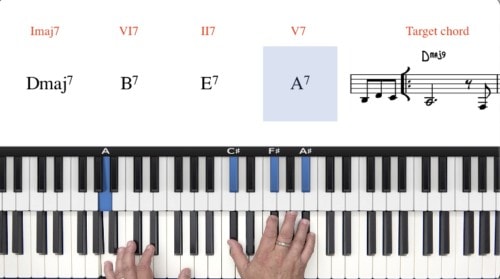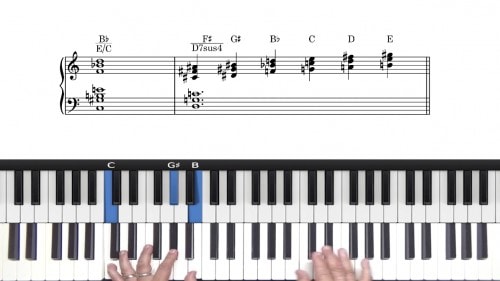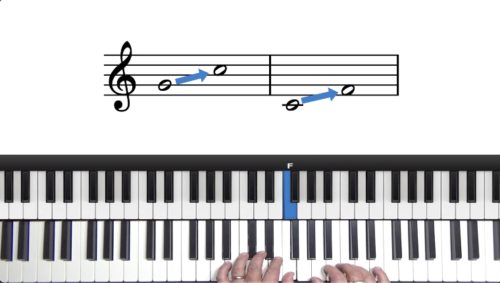How To Compose Music
In this lesson we are going to explore the process of composition. For many people, composition is a very mysterious process; particularly if you have never composed before.
Melody, Harmony, & Rhythm
There are 3 essential components of composing music. These 3 components are melody, harmony, and rhythm. A good composition will contain all three of these elements in varying amounts.
Jovino discusses these 3 elements and how each of these can be a starting point for beautiful compositions.
The Importance Of Motif Development
A motif is a melodic or rhythmic framework which can be applied throughout a composition.
Jovino demonstrates a simple and effective way to develop a motif that can be used for creative composition.
Tonal Melody & Polytonal Harmonic Concept
Jovino demonstrates 2 approaches to creating a harmonic framework when composing. We can follow a framework built on traditional progressions and cadences such as 25s and 251s, and we can also introduce a polytonal harmonic framework which does not rest in any particular key centre.
Injecting Rhythm & Groove
We can inject rhythm and groove to create a wide variety of composition styles such as ballad, samba, bossa nova, swing, and stride.
Lesson Downloads
-
Brazilian Piano Styles Workbook File Type: pdf
Practice Tips
-
Practice using your voice as the starting point for melodic creativity as Jovino demonstrates in the lesson.
-
Focus on motif development to add structure to our compositions.
-
Introduce non-diatonic chords to add harmonic interest and variety to a diatonic melody or motif.
-
Be conscious not to repeat the bass note in the melody to remove harmonic and melodic redundancy.
-
Once we have developed a basic harmonic and melodic framework we can inject rhythm to establish the style and groove of the composition.








Hi Folks,
Jovino a master musician and enjoy his playing & his compositions; In the Art of Composition (How to Compose) – the concept approach of polytonal harmonization – I wish that there’d been more of breakdown/explanation on how he arrived at the harmonizing chords used in the progression; why the Bbmaj chord used over the melody of 1st bar – etc. etc. He points out that he could have used basic chords fine, I get that, but I’d prefer an understanding of WHY he used the beautiful chords he did; what’s his method to the madness so to speak …
Hi Jess,
Jovino mentions using the Lydian Concept when choosing voicings.
For your question “why the Bbmaj chord is used over the melody of 1st bar”….
If we look at the melody note (E Natural), this is the #11 of Bb Major, and so Jovino is using this relationship to choose his voicings under the melody. This creates a melody in the Bb Lydian Mode.
If we look at the 3rd bar, we have a D Natural in the melody, and again Jovino chooses to play an Ab Major 7 chord. D is the #11 of Ab Major and so by choosing this chord underneath he is outlining the Ab Lydian Mode.
For more information check out Jovino’s live seminar recording on composition: pianogroove.com/live-seminars/how-to-compose-music/
and also this lesson on Lydian Harmony: pianogroove.com/bossa-nova-lessons/lydian-approach-for-harmonic-development/
Cheers,
Hayden
I found this an enlightening lesson. Thanks!
Hi Amelia 👋🏻
Glad you enjoyed the lesson!
Cheers,
Hayden